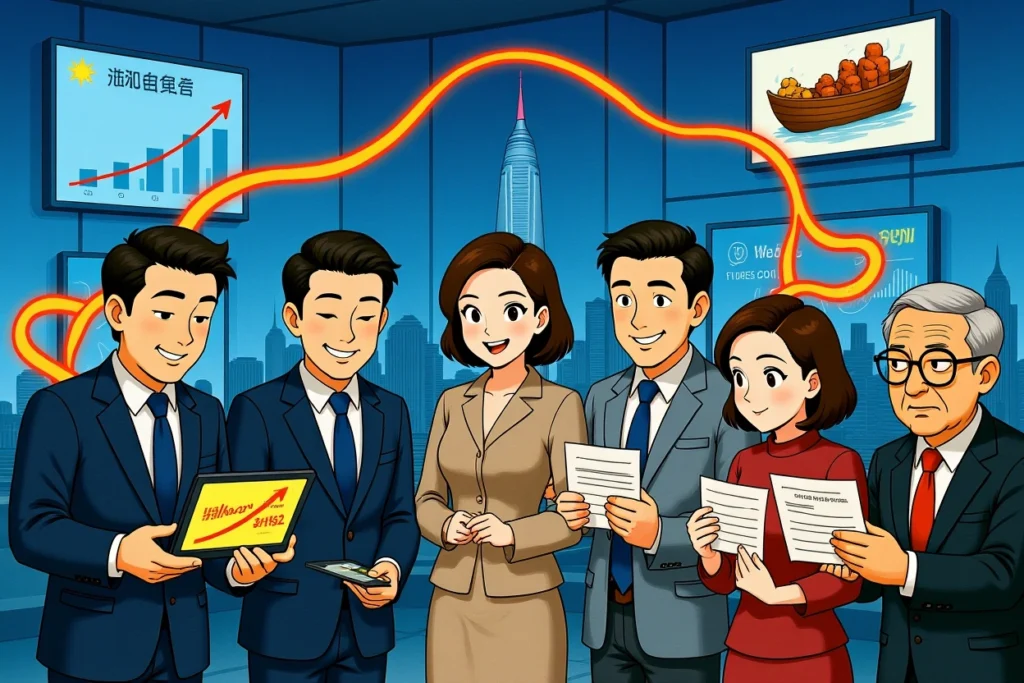Solar Industry Faces Turbulence Amid Market Speculation
China’s photovoltaic sector faces renewed uncertainty as the China Photovoltaic Industry Association (CPIA) publicly disputed market rumors regarding polysilicon production consolidation. On July 29, 2025, the industry body released an official statement dismissing claims circulating across social media that portrayed imminent government-backed consolidation plans as settled policy. The association emphasized its commitment to resolving industry overcapacity through legal and market-driven approaches rather than administrative directives.
This development occurs as futures for polysilicon—the essential material for solar panels—registered notable gains exceeding 3% on commodity markets, reflecting heightened market sensitivity to consolidation rumors. Industry analysts note this volatility underscores the delicate balance between addressing structural overcapacity while maintaining competitive dynamics within China’s solar manufacturing ecosystem.
Official Clarification Against Misinformation
In an unprecedented move, China’s premier solar industry association issued a formal denial via social media platform WeChat:
- The CPIA explicitly labeled circulating reports as “severely inconsistent with actual conditions”
- Urged market participants to “avoid spreading unverified rumors”
- Committed to resolving overcapacity through “market-oriented approaches” aligned with legal frameworks
Notably, the association stopped short of detailing specific false claims, leaving market observers to speculate about the precise nature of disputed statements. Industry sources indicate the confusion centers on rumored government plans involving a ‘large absorbing small‘ capacity restructuring initiative targeting polysilicon producers.
The Core Contradiction
This response highlights a fundamental tension in China’s solar policy apparatus. While acknowledging the pressing need to eliminate redundant capacity, the photovoltaic association simultaneously rejected what it characterized as simplistic narratives portraying consolidation as imminent or administratively directed. The CPIA’s statement underscores the complexity of implementing market-based solutions while preventing disorderly exit of production facilities.
Unpacking Acquisition Rumors
Multiple industry sources confirmed that disputed rumors centered on plans for larger polysilicon producers to acquire smaller facilities through a state-backed mechanism. Targeted enterprises reportedly included:
- Xinyi Group (信义玻璃 holdings)
- CSG Group (南玻集团)
- Baofeng Energy Group (宝丰能源)
- Runyang Group (润阳新能源)
- Hoshine Silicon Industry (合盛硅业)
The ‘large absorbing small‘ framework allegedly aimed to create vertically integrated champions through strategic acquisition of specialized polysilicon producers. However, fundamental disagreements about production costs, technology pathways, and asset valuations reportedly complicated discussions.
Inventory Management Imperative
As one industry technologist explained: “Consolidation means nothing without simultaneous inventory management. Enterprises maintaining excessive polysilicon stockpiles must suspend operations regardless of acquisition status—otherwise, even merged entities cannot properly allocate production resources.” Market data reveals polysilicon inventories currently exceed 14 days of downstream consumption, significantly above healthy operational levels.
Structural Factors Driving Consolidation Pressure
Three fundamental dynamics underlie CPIA’s anti-capacity coordination efforts:
Technological Displacement Acceleration
Monocrystalline production efficiencies have exceeded projections, rendering older polysilicon conversion technologies economically unviable. Recent performance comparisons show:
- Modern mono PERC lines achieving 23.2% median efficiency
- Legacy multi-crystalline facilities averaging just 18.7% efficiency
The widening performance gap forces market exits regardless of policy interventions.
Global Regulatory Environment
Washington’s extension of Section 301 tariffs coupled with Brussels’ new Carbon Border Adjustment Mechanism places unprecedented competitive pressure on Chinese solar exporters. Strategic consolidation enables resource pooling for R&D-intensive responses to international policies.
Price Volatility Dangers
Spot poly prices declined 62% year-over-year by mid-2025. This destabilizing collapse threatens viability throughout the value chain. Industry specialists note that restructuring becomes inevitable when commodity pricing falls below cash production costs for prolonged periods.
Implementation Pathways Face Obstacles
Despite misleading claims about imminent consolidations, practical barriers remain:
| Challenge | Impact Assessment |
|---|---|
| Equipment Heterogeneity | Disparate plant configurations impede consolidation synergies |
| Local Interests | Municipal employment concerns constrain asset transfers |
| Debt Structures | Legacy liabilities complicate clean asset separation |
As one executive involved in negotiations privately noted: “Nobody planned for consolidation possibilities during the expansion frenzy. Untangling assets requires painstaking compromise that contradicts simplistic online narratives.”
The Geographic Dilemma
Development geography further complicates ‘large absorbing small‘ implementation. Major facilities cluster in Xinjiang, Inner Mongolia, and Yunnan—provinces heavily dependent on sector stability. Provincial governments maintain conflicting priorities regarding inter-regional asset transfers.
Market Responds With Selective Optimism
Despite association clarifications, commodity markets registered strong polysilicon futures gains:
- DG Silicon futures rose 3.7% on Zhengzhou Commodity Exchange
- SERES Energy-linked producers gained 5-8% across A-shares
- TCL Zhonghuan valuation increased 6.2% following CPIA announcement
This selective enthusiasm reflects market expectations that industry restructuring—whatever its formal mechanism—remains inevitable given persistent price pressures.
Strategic Stabilization Pathways
Three coherent approaches could resolve industry fragmentation:
Coordinated Production Discipline
Learned from OPEC+, collective production scheduling could eliminate destructive volume competition without requiring ownership consolidation. Industry-led determination of quarterly output ceilings represents core market-based stabilization.
Technology Transition Aid
Government-backed facility upgrades could transform economically precarious polysilicon producers into complementary sector participants. Retooling for wafer cutting or graphite component manufacturing leverages existing industrial footprints.
Private Arbitration Channels
Establishing confidential settlement mechanisms would facilitate negotiated exits for technologically obsolete facilities while preserving producers’ commercial reputation—an essential consideration preventing disorderly bankruptcies.
The Distorted Information Landscape
A prominent poly plant CEO described the operational environment: “Navigating industry transition amidst competing online reports proves exhausting. We routinely confront decisions demanding investment totaling billions when uncertainty prevails even regarding regulatory alliance toward ‘large absorbing small‘ principles.”
This sentiment permeates sector decision-making desks. Manufacturers postpone equipment renewal programs amid escalating announcements regarding restructuring methodologies from competing interests. The CPIA clarification ultimately represents an unprecedented sector-wide effort to establish authoritative information channels.
Broader Implications Beyond Polysilicon
The photovoltaic association’s intervention reflects a governance maturation process:
- Industry bodies increasingly supplant administrative agencies in coordinating complex manufacturing sectors
- Policy formation evolves toward market-informed solutions rather than directive planning
- Information management emerges as strategic capacity stabilizing volatile industries
These developments establish precedents with applicability throughout advanced manufacturing sectors.
Forward Pathways for Industry Realignment
The CPIA commitment to resolution through “law-based and marketized principles” reveals fundamental truths:
- Temporary measures won’t resolve structural imbalances
- Sector-wide transparency remains prerequisite for sustainable outcomes
- Operational discipline must precede ownership restructuring
Progress toward functioning markets now demands rigorous inventory rationalization coupled with credible operational coordination protocols. The photovoltaic association’s clarification establishes essential truth-grounding when spontaneous discourse endangers thoughtful transition administration.
Actionable Guidance for Stakeholders: Solar industry participants should monitor official CPIA communication channels while avoiding conclusions based on unverified sources. For policymakers globally, this episode illustrates successful industry governance through professional association coordination during periods of transformational change.




